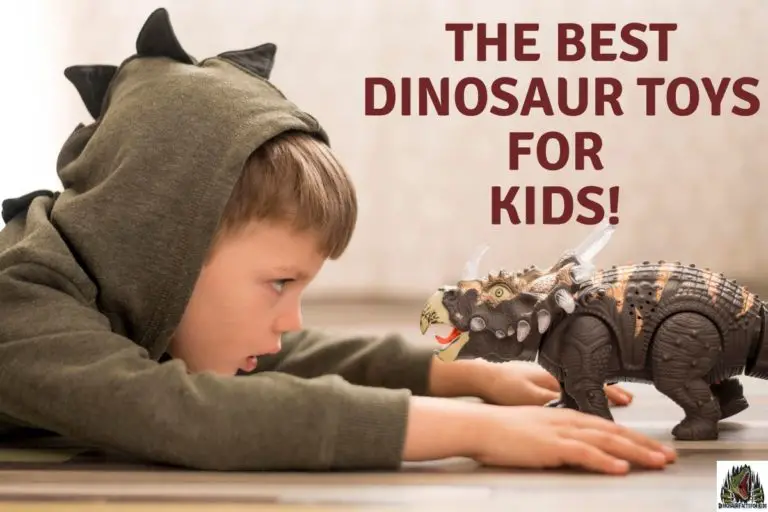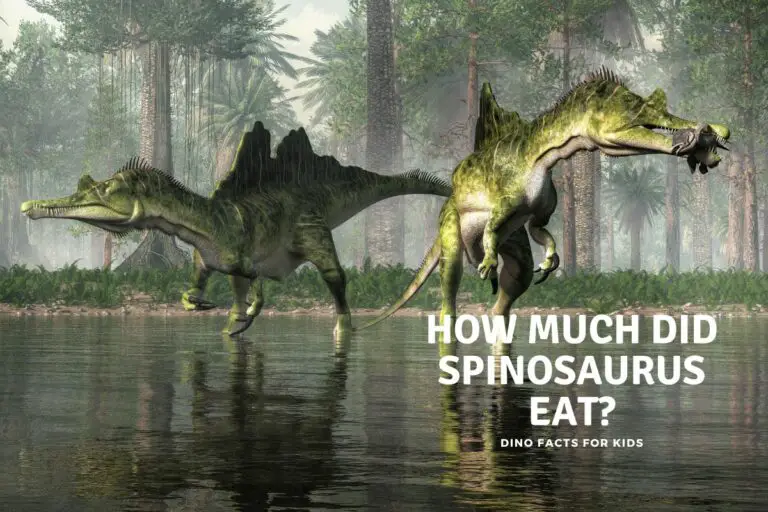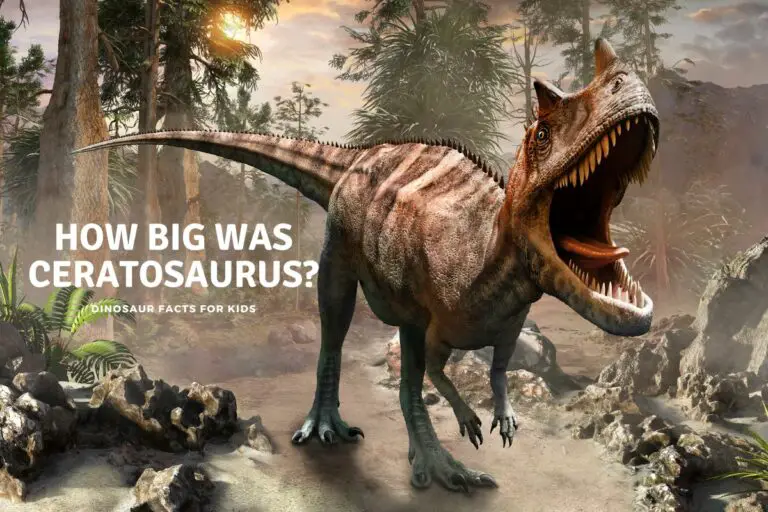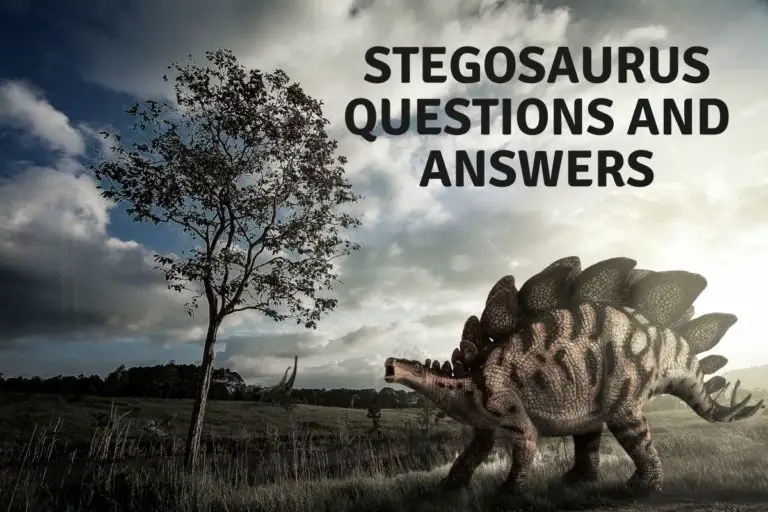Did T-Rex Hunt in Packs?
One of the most impressive and iconic dinosaurs in many people’s imaginations is the T-Rex. Most people have heard of these creatures, and we’re still learning more about them. Long thought massive solitary hunters, recent fossil finds in Utah and elsewhere have thrown this in the air and opened up the question did T-Rex Hunt in packs. We take a look at some of the evidence below.
The T-Rex may in fact have been a pack hunter, using social dynamics and cooperation to take down prey as a group. Fossil evidence indicates that the T-Rex may have been more social and less solitary than previously thought, and that family groups may have hunted and lived together in packs, much like modern wolves.
We take a look at some of this fossil evidence and discuss why T-Rex may have hunted in packs and how we suggest that might have looked when compared to modern day pack animals.
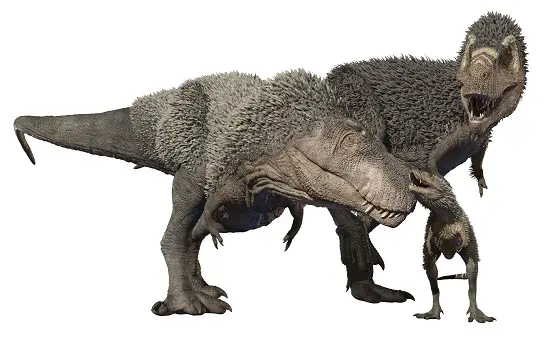
There is Fossil Evidence for Pack Dynamics
We learn the most about dinosaur social behavior thanks to fossil remains. Fossils can tell us how dinosaurs behaved, how they interacted with one another, what they ate, and in some rare cases, how they behaved including, on occasion how they hunted.
A rare find in Grand Staircase-Escalante National Monument in Utah in 2014 unearthed an entire herd of apparently drowned T-Rexes who seemed to have died together as a family group. The herd included one adult, one adolescent, and two juvenile animals.
Studies of the chemical composition of minerals at the fossil site indicated that these animals died together, and did not die over a period of time. This indicates whatever they were doing at the time they were doing it together in a small group.
Where finding two, who may have been competing over territory or a kill, could be explained by them dying from wounds inflicted on each other finding 4 and in some cases more fossilized remain certainly suggest activity other than just fighting.
Another early 20th Century find in Alberta, Canada unearthed nine distinct Tyrannosaur remains in a single site, indicating that these creatures lived and died together as a group. Though the exact cause of death for this apparent family group can not be determined, a single catastrophic cause such as a flood or suffocation is suggested.
Why were so many T Rex Found together.
Whatever issue was it indicates that these t Rex were close together, and usually large predators need a large territory to fulfil their needs. To find nine t rex fossils so close to each other, ant the same time offers two main explanations,
The first is that they were moving in a social group like lions or wolves, perhaps even with a dominant male and female at their head, if not so closely bound it as least means that these creatures of various ages lived and traveled together, and were socially bonded enough to remain with each other when disaster struck.
The second suggestion is that it may have been a period of tough times and food scarcity and like an African Drought and a water hole, it brought groups of animals together who might not normally want to be that close to each other. it could be that they all died at this time.
However, for this to be true there would need to be a lot more fossils of other dinosaurs in that area, and while there were a few there were not so many as to suggest some sort of environmental catastrophe occurred at the same time the t rex fossils were dated at.
Social Bonds Indicate Group Hunting
Social bonding, parental instinct and pack behavior in large predators is a strong indication that it may have extended into group hunting behavior. Animals such as lions, wolves, and African painted dogs all form strong social bonds with one another in a group pack, and work cooperatively to bring down prey which feeds the entire family.
Strong social bonds and emotional connections between creatures allow for a stronger incentive to work together to keep the entire group fed. Communication between pack hunters tends to be nuanced and goal-oriented, with every aspect of the hunt from stalking to the kill involving multiple animals in a coordinated effort. Group hunting also indicates social hierarchy and high levels of intelligence and a stable and clear social structure.
How Did the T-Rex Feed in Packs?
For a long time, it was assumed that the T-Rex was a scavenger, much like a vulture. The T-Rex’s small front limbs caused many scientists to believe that the animals scrounged for already-dead food, as the front limbs would have been useless for grasping and killing prey.
The large nasal passages of the T-Rex were also assumed by many paleontologists to be a physiological design meant to sniff out carrion. If the T-Rex was indeed a scavenger and was social, they would have likely scavenged in packs, the older adults sniffing out and then securing carrion so that the entire family could eat and be satisfied.
Other scientists believe that the T-Rex was a predator, who brought down live prey. The incredibly large and strong rear legs of the T-Rex would be perfect for chasing prey in short bursts, much like a modern lion. The teeth of a T-Rex would also be suitable for lethally injuring large and medium sized prey, and clamping down until the prey was dead.
Other scientists feel that the T-Rex could have been both a scavenger and a hunter, depending on what was available. Much like modern predators will both hunt and scavenge, the T-Rex may have adjusted its feeding habits depending on what was in its surrounding habitat.
Whichever way T Rex is thought to fed there are many examples in the modern animal kingdom of predators hunting and scavengers in packs
How Social Were Carnivorous Dinosaurs?
A number of other carnivorous dinosaurs may have exhibited social behavior, as indicated by the fossil record.
We don’t have information on every dinosaur species, but we have evidence that Deinonychus, a 10-foot long therapod and carnivore, hunted in packs. Synonymous with the Velociraptor, numerous Deinonychus remains have been found clustered around the remains of a single prey species, indicating that these highly intelligent animals may have worked together in packs to bring down herbivores.
Social behavior has been suggested for a number of other carnivorous dinosaurs based upon the proximity of individuals found fossilized next to each other. It’s not likely that every carnivorous dinosaur species was social or hunted in packs, but given modern animal behavior it is likely that at least some species lived and hunted this way.

Pack Hunting Can Lead to Greater Success
So why might T-Rex have hunted socially? For one, social hunting allows for a greater success rate overall.
A single prey animal may be able to outrun a single predator but hunting in packs allows an entire group of adult animals to tire out a single target. By taking turns running and attacking, social predators help other members of the pack save energy and can bring down a kill more successfully without tiring the entire group out.
More successful hunts mean more food for everyone, especially for growing juveniles. The more meat a growing, baby T-Rex had access to, the bigger and stronger the juvenile would become, and the higher a chance of survival they’d have.
Pack Hunting Has Disadvantages, Too
Pack hunting can have its drawbacks, though. An entire pack of animals needs more food to survive and thrive than a lone adult. If T-Rex did hunt in packs, that means the kill rate success level would have to be adequate for an entire group of predators, from young to adults.
The failure of one hunt means that even more individuals go hungry, and being socially bonded to the pack means that compassionate sacrifices need to be made for weaker or smaller members. Whereas survival might be easier for a solo T-Rex, being bonded to a family group meant that the wellbeing of the pack was of more value than individual safety.
This indeed is what may have happened to fossilized family groups of T-Rex, indicating that these potentially highly social creatures preferred to die together than survive on their own.
Conclusion
There is evidence that the T-Rex lived and hunted in packs, due to numerous fossil sites in which groups of adult and juvenile T-Rexes were found together, as though killed as a pack by a single incident.
The body structure of the T-Rex indicates a capacity for both active predation as well as scavenging, and the T-Rex may well have adjusted its eating habits depending on what was available, or convenient. Both habits could have been the setting for social behavior and pack dynamics.
We have a huge selection or articles to answer the common and some less common questions about the Tyrannosaurus Rex here on the site and to make it easier to access we have them in the table below.
References
- https://www.smithsonianmag.com/smart-news/new-fossils-suggest-tyrannosaurs-may-have-hunted-packs-180977568/
- https://www.newscientist.com/article/2275060-tyrannosaurs-may-have-hunted-together-in-packs-like-wolves
- https://www.cbc.ca/natureofthings/features/the-fierce-t-rex-hunted-in-female-led-packs
Hi, I am Roy Ford a General Studies and English Teacher who has taught all over the world. What started as a fossil collection became a great way to teach, motivate and inspire students of all ages and all over the world about dinosaurs and from that and children’s love of dinosaurs came the site dinosaur facts for kids, a resource for all ages.


